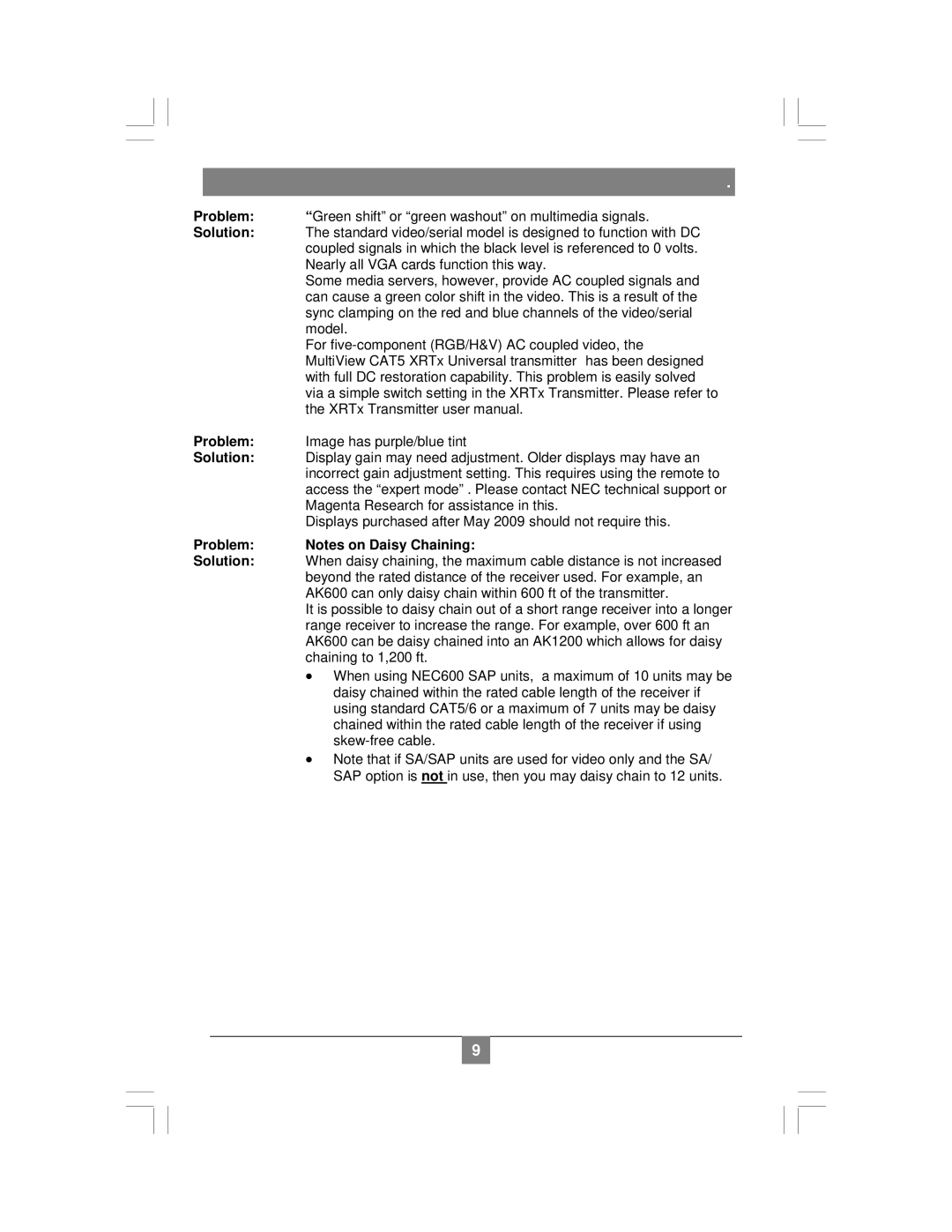
.
Problem: | “Green shift” or “green washout” on multimedia signals. | |
Solution: | The standard video/serial model is designed to function with DC | |
|
| coupled signals in which the black level is referenced to 0 volts. |
|
| Nearly all VGA cards function this way. |
|
| Some media servers, however, provide AC coupled signals and |
|
| can cause a green color shift in the video. This is a result of the |
|
| sync clamping on the red and blue channels of the video/serial |
|
| model. |
|
| For |
|
| MultiView CAT5 XRTx Universal transmitter has been designed |
|
| with full DC restoration capability. This problem is easily solved |
|
| via a simple switch setting in the XRTx Transmitter. Please refer to |
|
| the XRTx Transmitter user manual. |
Problem: | Image has purple/blue tint | |
Solution: | Display gain may need adjustment. Older displays may have an | |
|
| incorrect gain adjustment setting. This requires using the remote to |
|
| access the “expert mode” . Please contact NEC technical support or |
|
| Magenta Research for assistance in this. |
|
| Displays purchased after May 2009 should not require this. |
Problem: | Notes on Daisy Chaining: | |
Solution: | When daisy chaining, the maximum cable distance is not increased | |
|
| beyond the rated distance of the receiver used. For example, an |
|
| AK600 can only daisy chain within 600 ft of the transmitter. |
|
| It is possible to daisy chain out of a short range receiver into a longer |
|
| range receiver to increase the range. For example, over 600 ft an |
|
| AK600 can be daisy chained into an AK1200 which allows for daisy |
|
| chaining to 1,200 ft. |
|
| • When using NEC600 SAP units, a maximum of 10 units may be |
|
| daisy chained within the rated cable length of the receiver if |
|
| using standard CAT5/6 or a maximum of 7 units may be daisy |
|
| chained within the rated cable length of the receiver if using |
|
| |
|
| • Note that if SA/SAP units are used for video only and the SA/ |
|
| SAP option is not in use, then you may daisy chain to 12 units. |
|
|
|
9
